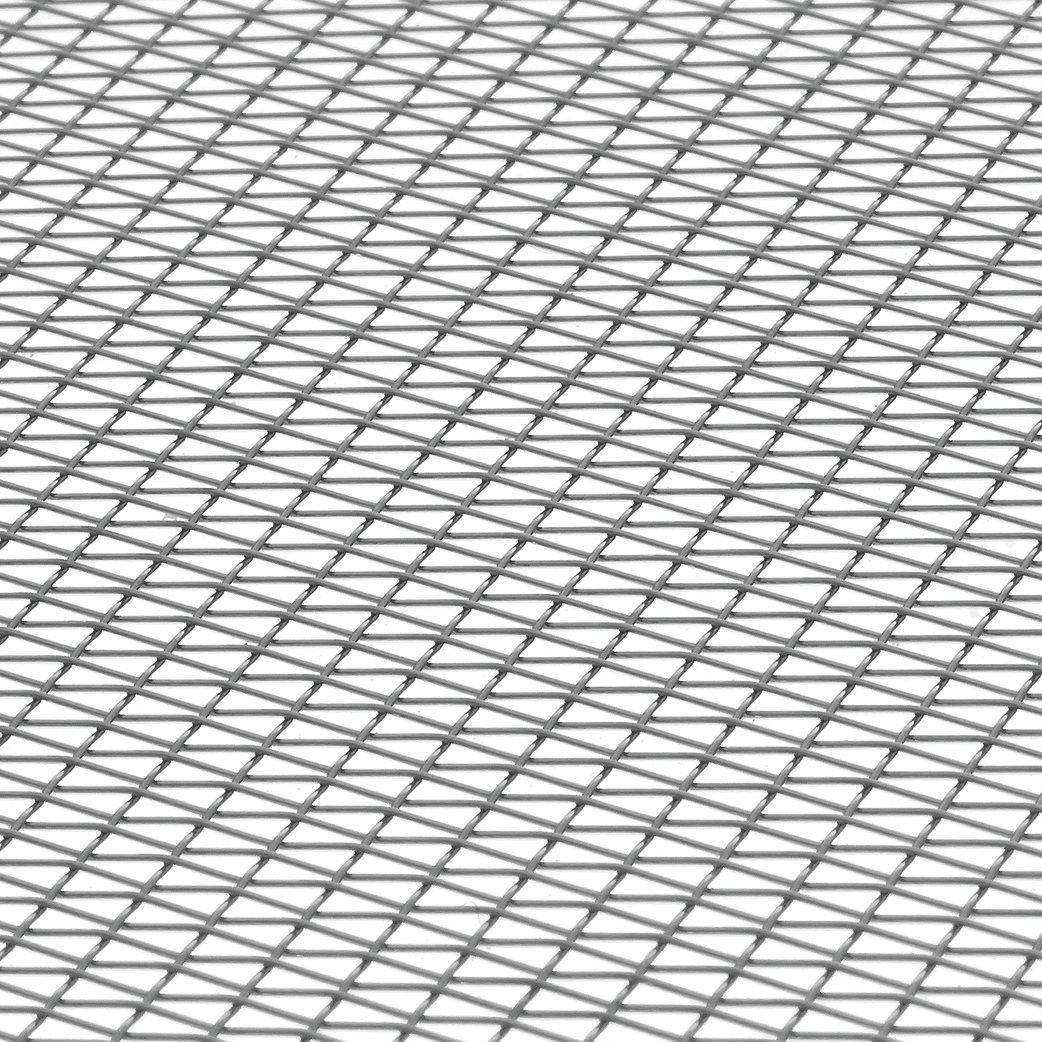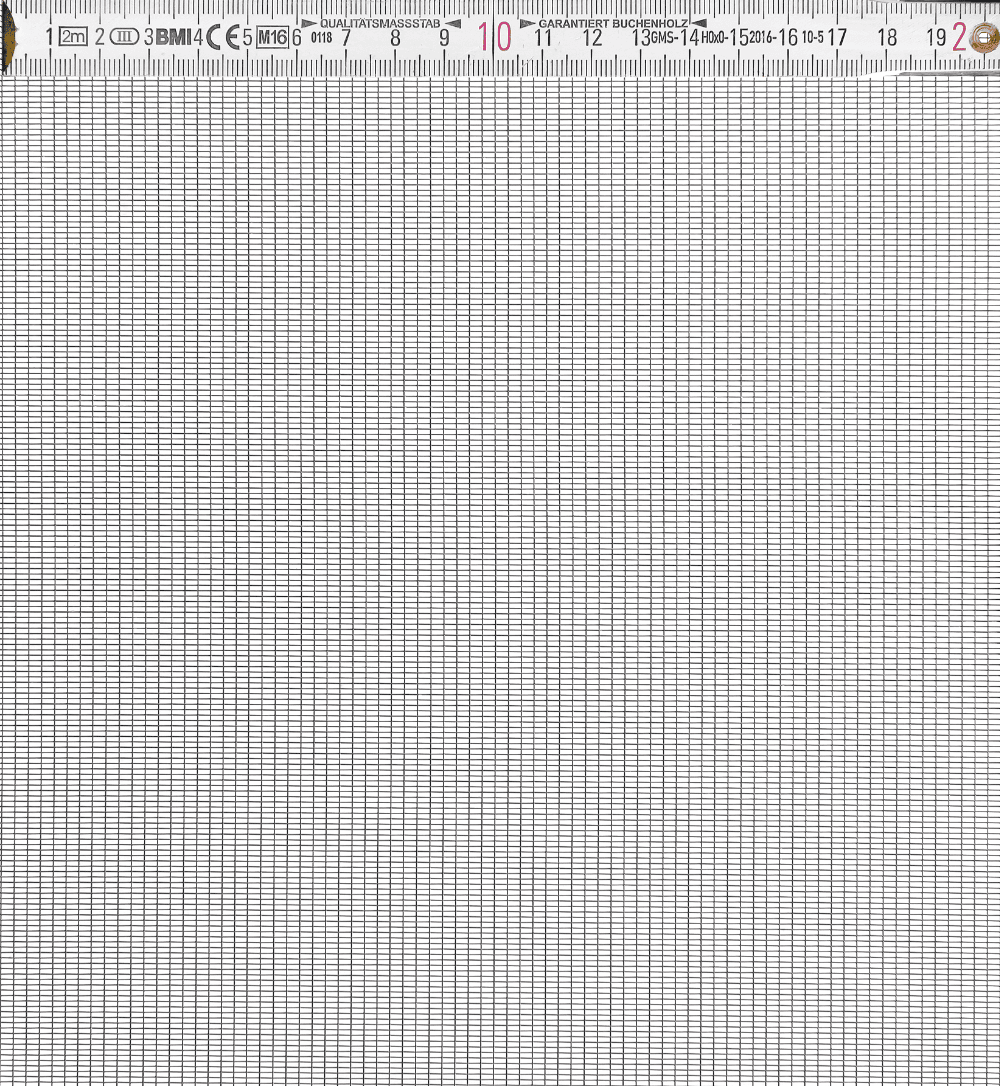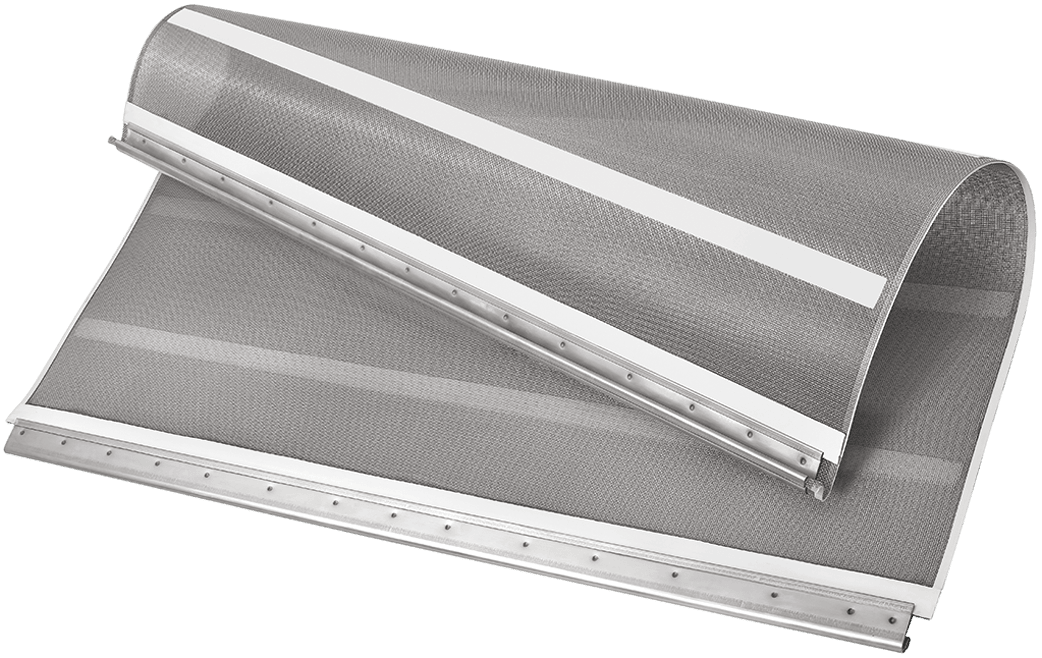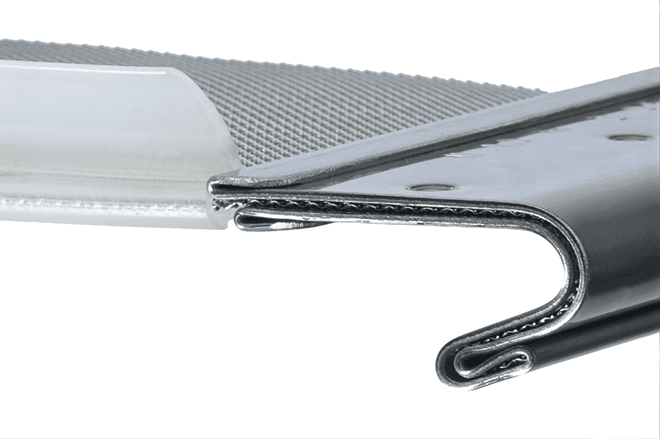
In the past, manufacturers focused their attention on the selection of screening machines for the screening of sugar. Many different types are used: round screen machines, end and side tensioned vibrating screens or directly excited screens. Less well known, however, is the fact that both the throughput quantities and the process reliability of the screening can be optimised to a high degree by selecting suitable screen cloths. How is this possible? The wire weaving company Haver & Boecker has developed a special product range for this purpose focusing on the aperture shape and the material.
Increasing the throughput
Many producers use square mesh woven wire cloth. Whenever precise separation cuts of screening materials are required or elongated particles have to be screened, it is essential to use square apertures. The following applies: the thicker the wire diameter compared to the aperture width, the smaller the open screening area. The throughput is thus reduced, but at the same time the screen section offers a longer service life. If sugar manufacturers have capacity problems with their screening machine, it is possible to solve these by selecting an optimised screen cloth without having to purchase a new screening machine. In most cases, the wire diameter is reduced. This however can have a negative effect on the service life of the screen sections. There is a more effective way:
 Fig. 1: Rectangular apertures, view on top. For round or cubic particles,it is an option to use rectangular or slotted wire cloth. Thanks to their relatively large open area, they ensure higher output with smaller clogging tendency.
Fig. 1: Rectangular apertures, view on top. For round or cubic particles,it is an option to use rectangular or slotted wire cloth. Thanks to their relatively large open area, they ensure higher output with smaller clogging tendency.
For round or cubic particles, the use of rectangular or long slot woven wire cloths is recommended. Their relatively large open screening area leads to a higher performance with a lower tendency to clog. If the long slot is parallel to the material flow, a higher throughput is achieved. If it is crosswise to the flow direction, a more accurate separation cut is achieved. The greater the ratio of length to width, the more flexible the woven wire cloth is and the better the self-cleaning effect. Furthermore, a flexible wire cloth promotes layer formation, also known as stratification: the fine sugar particles reach the sieve surface faster and thus are screened more effectively. The result is a significantly improved throughput. Sugar particles are mostly round or cubic, i.e. they are uniform or not elongated, and so that rectangular openings can be used for most manufacturers without problems.
As standard, rectangular woven wire cloths have a ratio of 1:3 and the same wire diameters are used as for the corresponding square meshes. However, more and more meshes are now being produced in a ratio of up to 1:25. In all cases, the open area is increased compared to the square mesh, which ensures a higher throughput. Depending on the wire diameter selected, the lower weight per unit area may reduce the service life of the screen section. Since sugar is not an abrasive material, the wear properties should only be taken into account to a limited extent in the decision-making process.
 Fig. 2: Rectangular apertures, side view. If the long slot runs parallel to the material flow, a higher output is achieved.
Fig. 2: Rectangular apertures, side view. If the long slot runs parallel to the material flow, a higher output is achieved.
If manufacturers are unsure whether their sugar particles are round or cubic, this can easily be determined by a photo-optical analysis. The HAVER CPA 2-1 has become a standard for the sugar industry and shows not only the grain shape but also the exact grain analysis. This is done in a fraction of the time required for conventional analytical sieving. Haver & Boecker offers various solutions for online analysis during the production process.
Increasing process safety
In addition to the mesh shape, the selection of the right wire material is also important. Until now, spring steel and stainless steel 1.4016 (AISI 430) were used as magnetizable materials allowing for the use of magnetic separators to sort wire residues out of the product in the event of a wire break. However, both materials also have disadvantages in the screening process. Spring steel wires must be used in dry processes, otherwise they can corrode. In addition, the wires have a very high tensile strength making the wire brittle and thus susceptible to continuous oscillation breaks. The material 1.4016 (AISI 430), on the other hand, has a very low tensile strength and surface hardness. The use on vibrating screens is only possible to a very limited extent and with a short service life.
For this reason, many manufacturers have used the material 1.4301 (AISI 304), which offers a good but not an outstanding mixture of tensile strength and surface hardness. Furthermore, this material is not magnetizable, so that these wires cannot be detected in the event of a wire breakage. In such cases, complete batches must be screened again: an extremely expensive undertaking that should be avoided.
 Fig. 3: HAVER Multistretch provides for optimum tensioning of screen and support layer.
Fig. 3: HAVER Multistretch provides for optimum tensioning of screen and support layer.
In short: not all previous standard materials are well suited for use in sugar screening. For this reason, Haver & Boecker has set up a stock program for the common wire cloth specifications of the sugar industry in material 1.4462 (Duplex), for both square and rectangular meshes. This Duplex material combines all the positive properties of the above-mentioned materials: a medium tensile strength counteracts wire breakages caused by continuous vibration loads, and a high surface hardness ensures very good wear properties. In addition, Duplex is magnetizable and metal residues can be detected with a magnetic separator.
Correct maintenance and handling required
If wire breakages occur despite the use of the Duplex material, this can have several causes. If the wire breaks before wear occurs, this is usually a sign of vibration breaks, which can be caused, for example, by insufficient maintenance of the screening machine or incorrect installation of the screen sections. But also bad handling of the screen sections can be the reason: Once there is a kink in the screen mesh, it can no longer be tensioned properly. The kinks will eventually lead to wire breaks. Especially when removing and reinstalling used screen sections, such damage can occur to the wire screen. Haver & Boecker will be happy to advise you on the correct handling and installation of the screen sections.
 Fig. 4: Double fold hook strip for end tensioning. Available with silicon or rubber seal.
Fig. 4: Double fold hook strip for end tensioning. Available with silicon or rubber seal.
Once the screens have been correctly installed, they can last a whole season and longer. However, it is generally recommended to replace the used screens after each sugar campaign.
By using the optimum woven wire cloth specification, the capacity of a plant can be optimised while at the same time greater process reliability is ensured. With a correct installation of the wire mesh sections, the screening can be performed without any worries. The sieve analyses can also be checked quickly and reliable on the HAVER CPA units. Solutions from a single source.
Authors’ address: Haver & Boecker OHG, Carl-Haver-Platz 3, 59302 Oelde, Germany,
www.haverboecker.com